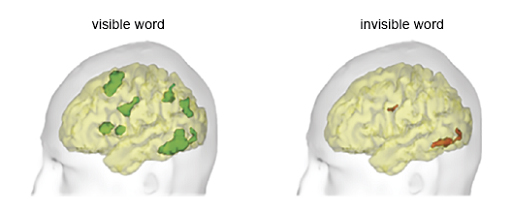6.3 Studying consciousness in the laboratory
A complete explanation of consciousness is still far out of our reach. But using our current knowledge, we may be able to discern experimentally between these and other theories.
For example, a key difference between these two theories is the expected focus of brain activity for different conscious experiences. This can be studied by exposing someone to stimuli which are above and below the limits of conscious perception, such as an image of a word. When consciously perceived, there is a burst of activity across different brain regions, but when detected only subconsciously, the brain activity is much more limited.

A complete explanation of consciousness will depend on continuing experimental investigation and technological advances, in parallel with further theoretical developments.
